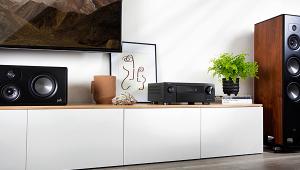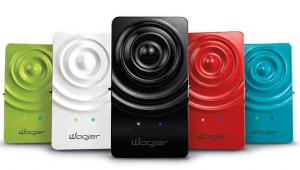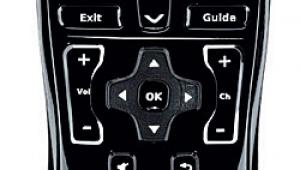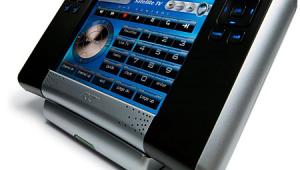Air Def TV

In late 2003, HDMI-equipped consumer-electronic devices started to appear on the market. Unfortunately, the transition to digital has been anything but smooth. Although HDMI was a vast improvement over DVI (Digital Visual Interface) in its ability to carry both audio and video in one cable, it came with its own set of issues.
First, it was clumsy to work with for any kind of custom installation. HDMI cables can’t usually be self-terminated at the end points by the installer, and, while a standard HDMI connector is smaller than the old DVI connectors, it still requires a good size hole to pull wire through the studs and sheetrock. Second, the HDMI specification has been nothing short of a moving target over the past nine years. Features have been added to our audio and video sources that require higher data rates, demanding that the HDMI links be upgraded to carry a wider bandwidth. The HDMI cable you installed in 2005 won’t work with many of the add-on technologies in the specification, such as Audio Return Channel (ARC) and 3D support. Furthermore, as the bandwidth requirements increased, this made longer cable runs more troublesome. To accommodate the higher throughput, the cables had to have lower resistance per foot, which required that they be thicker, stiffer, and heavier. The strain this put on the associated equipment has led to loose connections or even broken HDMI ports.
Last but not least has been the inconsistent licensee support of the HDMI specification. HDMI Licensing (HDMI.org), the governing body that oversees compliance with the HDMI standards for a variety of products, seems to have finally gotten control of this after several years of confusion. As of this year, HDMI products may not make any reference to HDMI version numbers. To ensure that consumers, retailers, and installers can identify the right cable for their needs, all HDMI cables must now be clearly marked with the appropriate cable type, as shown below:
- HDMI Standard—1080i/720p video
- HDMI Standard with Ethernet—1080i/720p video with device networking
- HDMI Standard Automotive—1080i/720p video
- HDMI High Speed—1080p, 3D, 4K, Deep Color, ARC
- HDMI High Speed with Ethernet—1080p, 3D, 4K, Deep Color, ARC, and device networking
We’ll assume for the moment that the HDMI specification isn’t going to change again anytime soon—though there’s never a guarantee of that. But the other problems with HDMI cables still persist. Long cable runs remain a pain to get through walls, and once you go beyond 20 feet or so, signal integrity can start to be an issue. There are several options to counteract this loss of signal over distance, including built-in equalization, or converter kits that pass HDMI over Cat 5/6 wire or fiber-optic cable. I personally us a 15-meter (49 foot) PureLink HDC fiber- optic cable system from my pre-pro to my projector. But all of these solutions have two things in common: high cost, and the need to still run wires over long distances and hide them. Is there another alternative?
Enter the Wireless World
According to HDMI Licensing, there’s no official designation
for wireless HDMI, but the consumer-electronics industry
is never one to sit still where there’s an irresistible—and moneymaking—opportunity. There are three different HDMI wireless standards now vying for market dominance—Wireless HD, WHDI (Wireless Home Digital Interface), and WiGig (Wireless Gigabit Alliance). Moreover, there’s nothing to stop a company from developing its own in-house solution to compete.
Developed by Intel, LG, Panasonic, Philips, Samsung, Silicon Image, Sony, and Toshiba, Wireless HD (WirelessHD.org) technology promises to deliver pristine, lossless HD audio, video, and data with the convenience of wireless connectivity. It uses 60 gigahertz “millimeter” wave technology with a bandwidth of up to 28 gigabits per second to wirelessly stream uncompressed video and audio. With such a massive pipeline, the technology eliminates the need to re-encode content for transmission from your source component to the display. It also supports both DTCP (Digital Transmission Content Protection) and HDCP (High Bandwidth Digital Content Protection) 2.0.
This means that Wireless HD can support video with up to 4K resolution with 120-hertz refresh rates, is 3D ready (at least at 2K resolution), and is compatible with multiple video streams for picture-in-picture (PiP). On the audio side, it can handle two channels of 192 kilohertz LPCM (linear pulse-code modulation), 5.1 channels of 24-bit/96 kHz LPCM, and up to 13.1 channels of 24-bit/192 kHz compressed Dolby TrueHD or DTS-HD Master Audio with a maximum latency (delay) of 15 milliseconds (typically 5 ms). The one downside of this standard is that the best performance is limited to a range of 10 meters (about 33 feet) or less, and while the signal can bounce off of walls and ceilings, both the transmitter and receiver must be in the same room.
The second candidate, WHDI (WHDI.org), is being pushed by Amimon, Hitachi, LG, Samsung, Sharp, and Sony. This technology, which uses the unlicensed 5-GHz band, enables wireless delivery of HDTV throughout the home with video resolutions of up to 1080p. WHDI provides the convenience and flexibility to connect HDTVs wirelessly to conventional video sources such as set-top boxes and Blu-ray players, and unconventional ones such as notebook computers and mobile phones. Like Wireless HD, the system is HDCP complaint.
WHDI audio capabilities are limited to 5.1 channels. If your Blu-ray player is set to output bitstream audio, lossless Dolby TrueHD and DTS-HD Master Audio soundtracks will be limited to their lossy Dolby Digital and DTS versions. But if you choose to decode the soundtrack to multichannel LPCM in the player and set the player output accordingly, the 5.1-channel PCM signal, along with any secondary audio it contains, will be sent wirelessly in full resolution.
Unlike Wireless HD, WHDI components do not require a line-of-sight placement. The wireless signal can travel up to 100 feet through walls and ceilings. The standard also supports IR passthrough for wireless control of your devices using IR emitters.
The third contender, the WiGig Alliance, shares similarities with both Wireless HD and WHDI. It supports throughput of 7 gigabits per second and operates in the 60 gHz range like Wireless HD, but adds something called “beamforming” technology to extend the claimed range to something beyond 10 meters (33 feet). One small problem—there are no WiGig Alliance products on the market yet. If you’re curious, you can read more at wirelessgigabitalliance.org.
How We Tested
Because each wireless solution reviewed here has its own unique abilities, the tests I ran were dependent on the specific device. Testing equipment included an Integra DHC-80.2 pre-pro, a TiVo Premiere DVR, LG BD620 and Oppo BDP-95 Blu-ray players, and a Sony PS3 console. Three different tests were performed—in room, from 33 feet away with a separating wall for those products that supported that, and outside from about 65 feet away through multiple walls.
In all cases, I was looking at how well the unit performed at the respective range, particularly the subjective audio/video quality and signal integrity. Video tests were conducted with test patterns (see the Video Benchmark scores) as well as 2D and 3D material (movies and games). For the audio tests, a primary concern was whether each unit could maintain an audio lock and remain free of dropouts, and whether they were able to send multichannel audio or just two-channel stereo.
For each system, test patterns were used to check for any loss of resolution in color or black and white signals, and to see if the unit was introducing any clipping of the signal in the color or luma channels. I also checked if it could properly pass a below-black and above-white signal.
Keep in mind that the usual caveats associated with testing consumer wireless products apply here. There’s nothing unusual about my test environment that would make it more difficult for these systems to perform, but performance is always subject to the potential for local radio frequency interference and whatever unusual structural barriers might apply in each installation. My tests reflect the results in my home. Your mileage may vary.
- Log in or register to post comments






























































